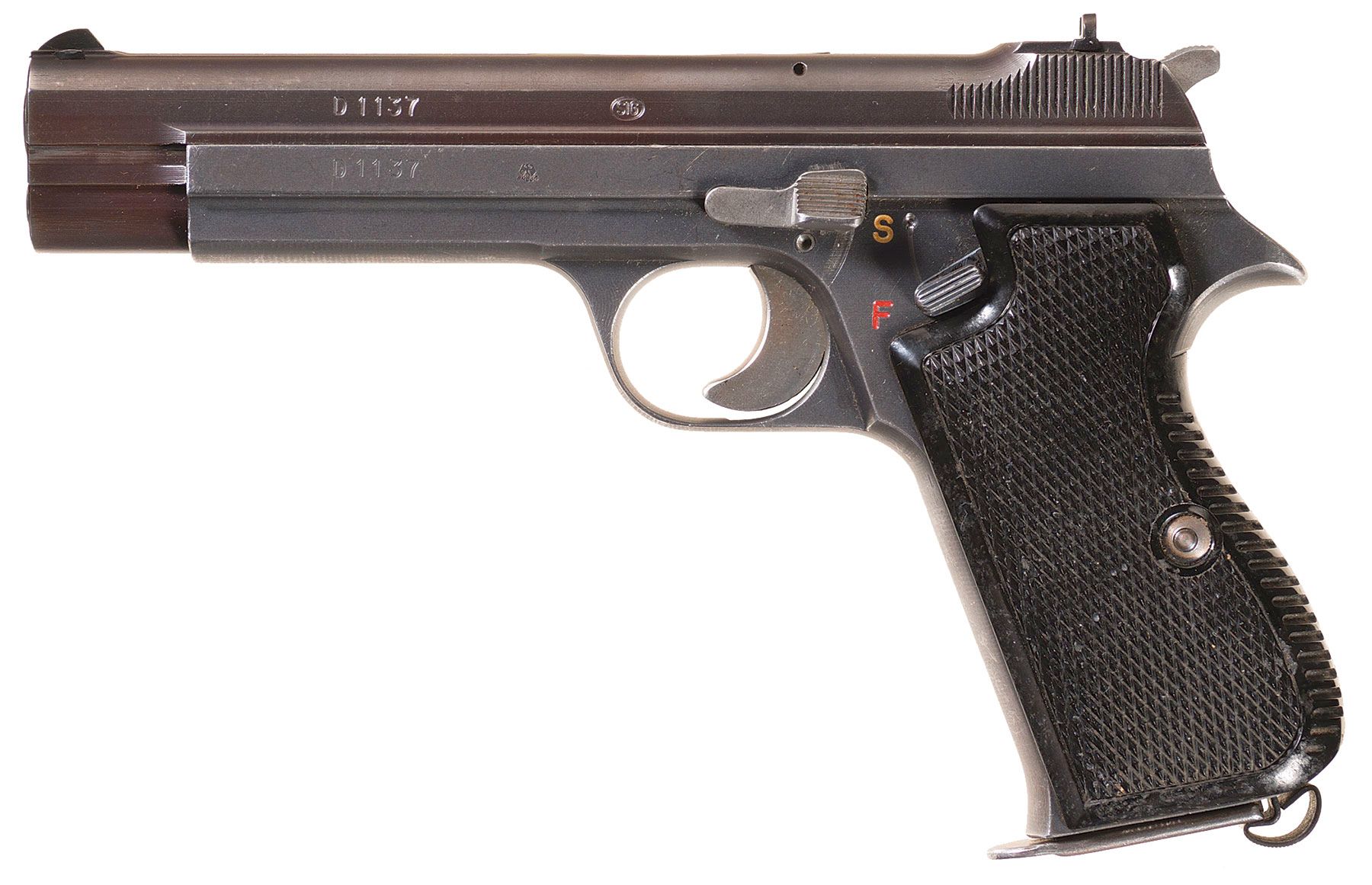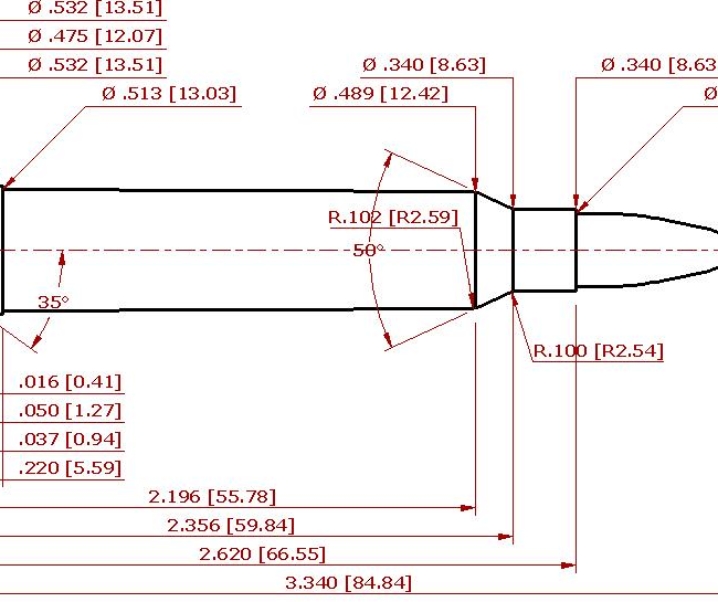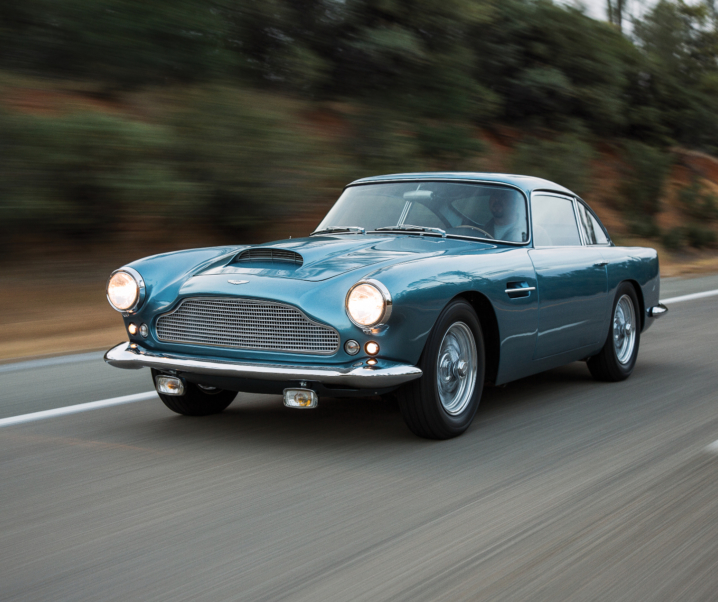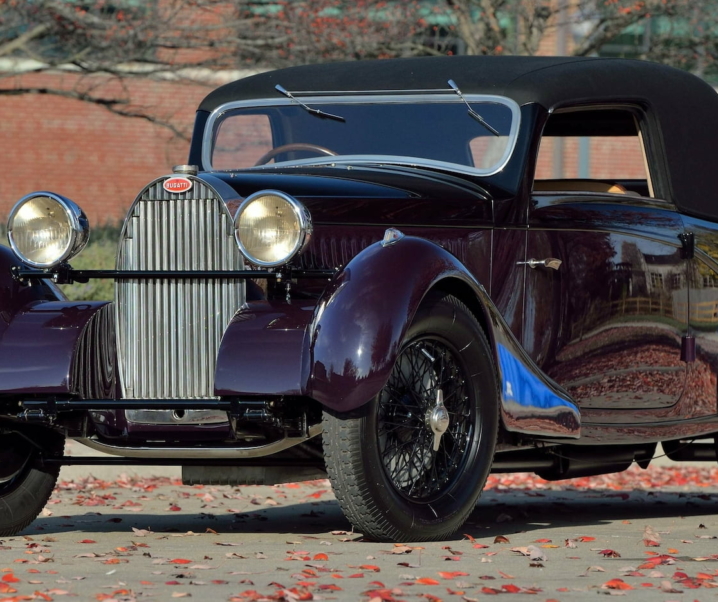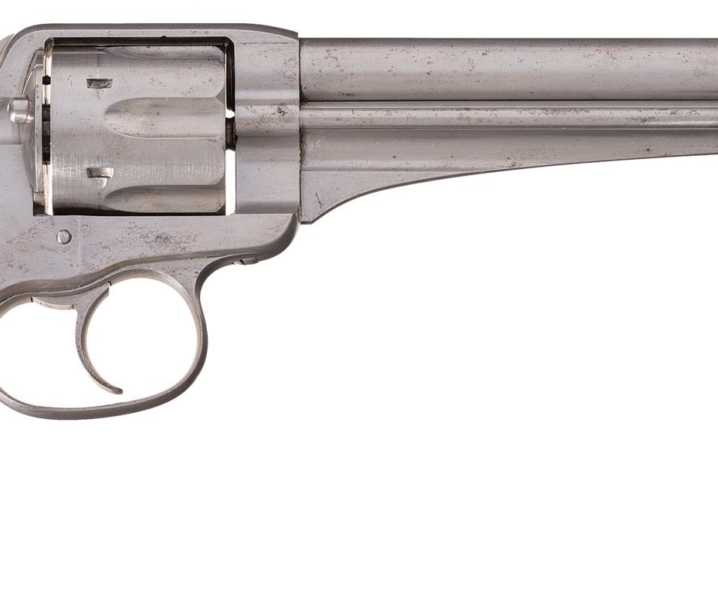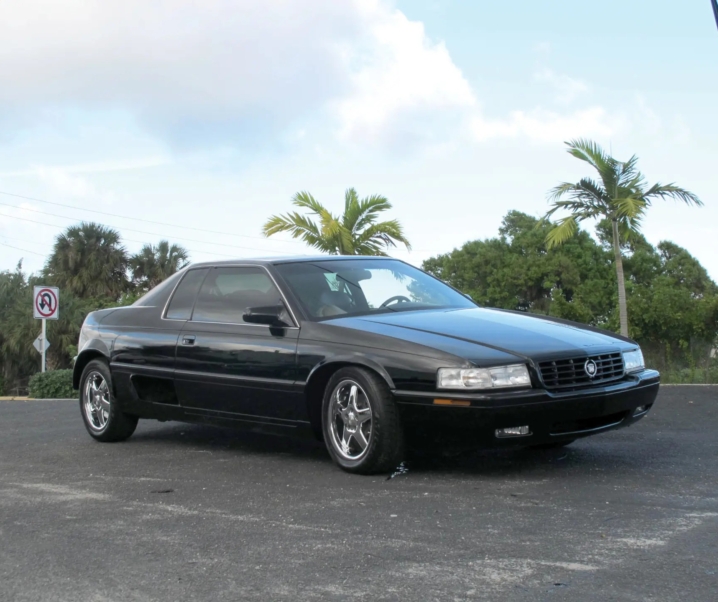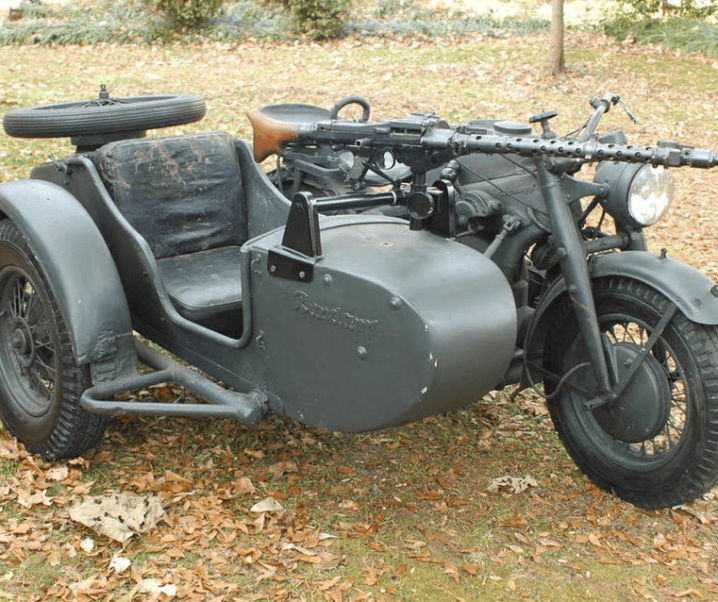The SIG P210 is to handguns what a Swiss watch is to wristwatches. The P210 has been described by firearms authority Ian Hogg as “The best pistol in the world” and the first time I was able to handle and fire one I quickly became convinced he was right. If you have used a hand fitted custom pistol then you’ll have a good idea of how an out of the box Swiss made SIG P210 looks and feels. Quality comes at a price however and the Swiss made P210 pistols were high priced items.
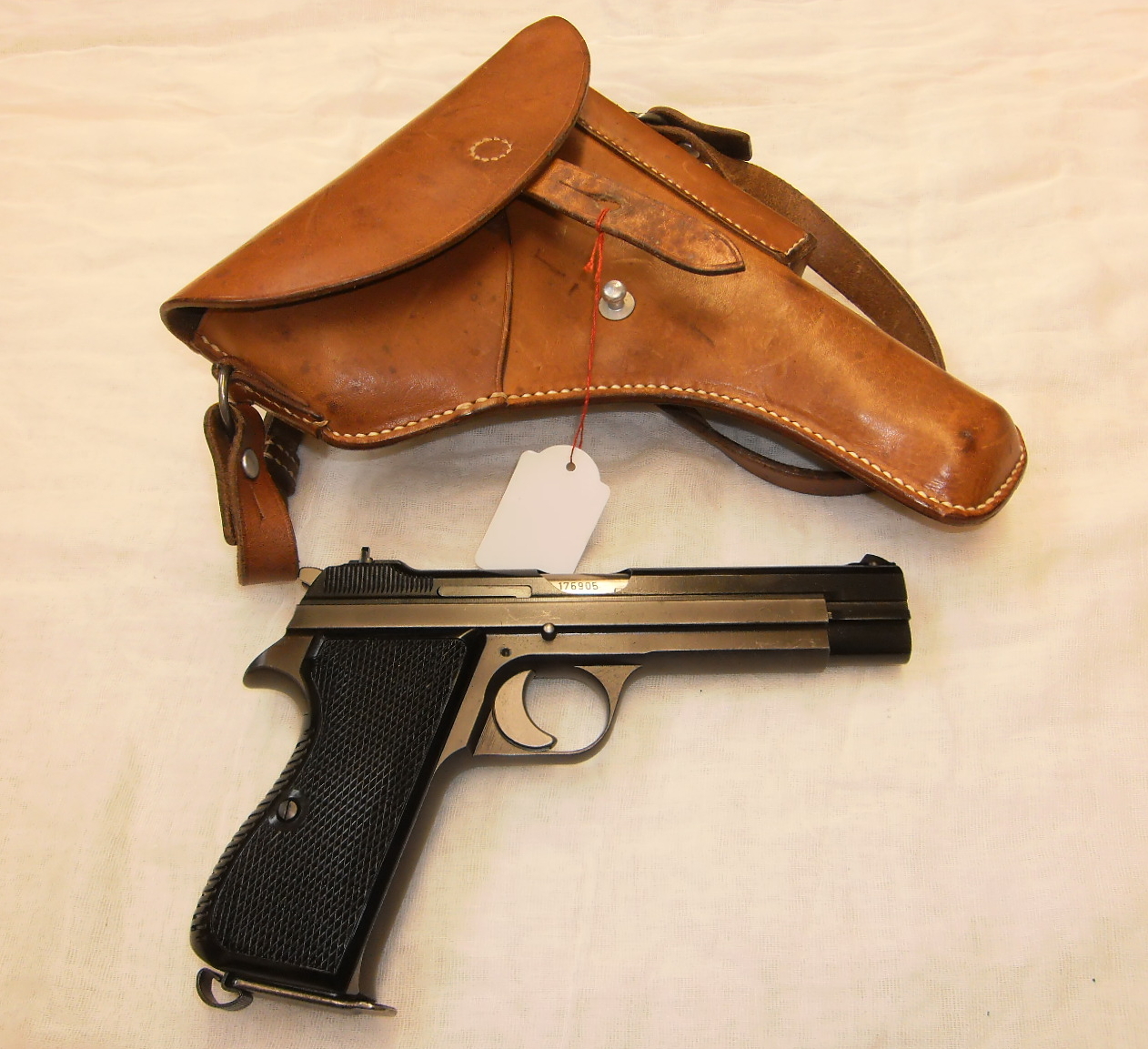
History
The SIG P210 was designed after Schweizerische Industrie Gesellschaft (SIG) were tasked with creating a replacement for the Luger pistol that had served the Swiss military well from its adoption in April, 1901. Switzerland shares common borders with Germany and France and in 1937, with the political situation being what it was, SIG looked to France for the base design of its new military handgun, and purchased a license for the Petter designed Model 1935A being manufactured by SACM (Société Alsacienne de Constructions Mécaniques). Charles Petter was Swiss, and had military experience, having served as a captain in the French Foreign Legion. His Model 1935A pistol was and is an excellent design, based on the Browning short recoil system much like the M1911, but with the slide-rails inside the frame. Just like the J.M. Browning design the Petter variation used a slide set in rails on the action. On firing the slide and barrel assembly would remain locked together by recoil lugs in the top inside of the slide and corresponding lugs in the top of the barrel’s breech end. As the barrel and slide assembly recoiled a toggle link under the breech end of the barrel caused the breech end of the barrel to tip downwards unlocking it from the slide so the slide would continue back into battery ejecting the spent cartridge case in the process.
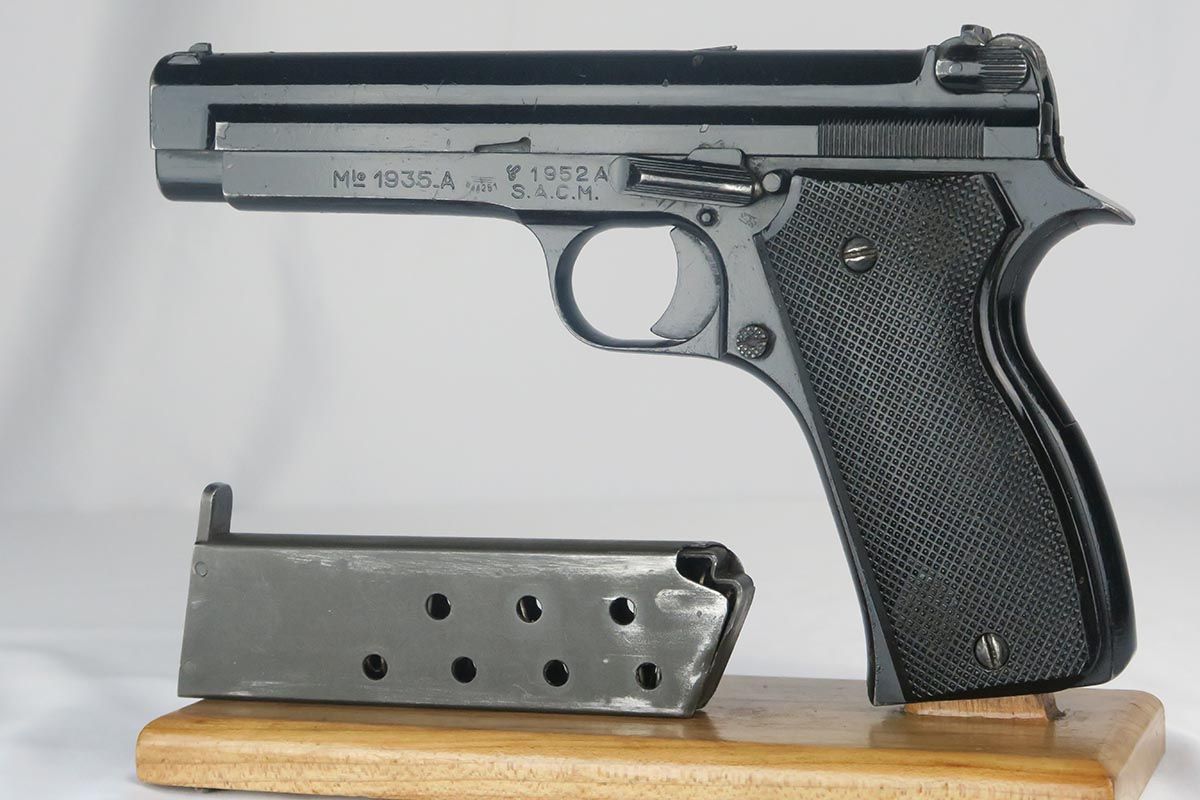
(Note: You will find the SACM M1935A for sale on Legacy Collectibles if you click here).
Charles Petter’s design sought to improve on John Moses Browning’s M1911 in a number of ways. As previously mentioned he mounted the slide inside rails in the action, creating a more positive alignment between slide and frame. To further ensure a more positive alignment than the Browning M1911, Petter installed a full length guide rod with the recoil spring as an assembly, mounted under the barrel, and thus removing the dependency on the barrel bushing to provide alignment as we find on the M1911. Having been a soldier in the Foreign Legion, Charles Petter was also well aware of the need to make the maintenance of the weapon as easy and idiot proof as possible, so he created the trigger mechanism as an easily removable group component. These features, including the unitary trigger assembly, were included in the new SIG P210 developed in Switzerland.

Despite the excellence of the original Petter design, the engineers at SIG were determined to perfect their new pistol and proceeded to test and develop it even as the Second World War raged around them. They produced two development prototypes; the 44/8 and the 44/16.
The 44/8 and the 44/16
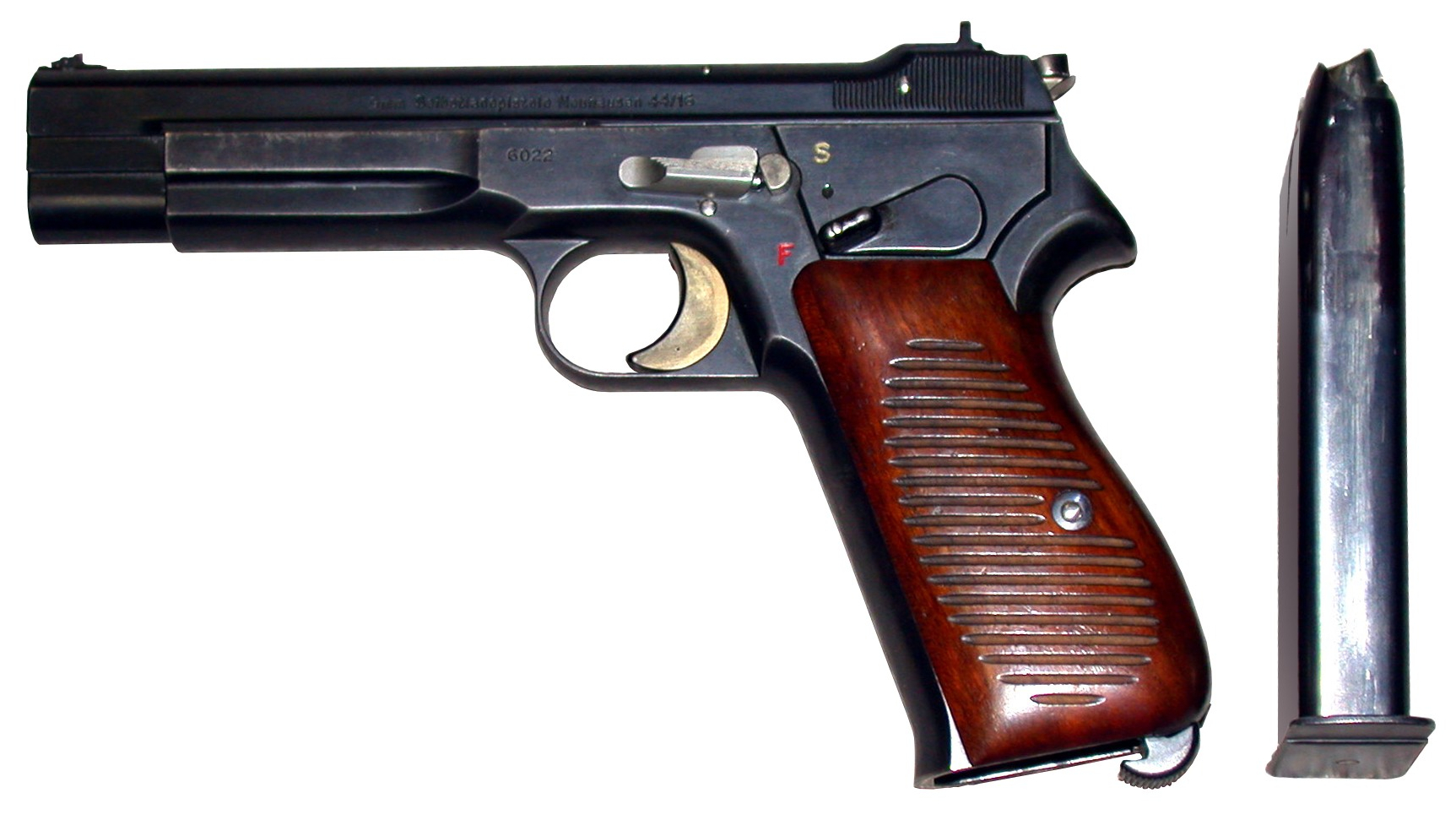
The 44/8 pistol was made with an eight round magazine, which allowed it to be made thinner and slightly less tall than its 44/16 sibling which featured a sixteen round capacity magazine. Both models 44/8 and 44/16 were made in 9mm Parabellum (9x19mm), although I have come across one source that indicates that prototypes were also made in 7.65x21mm (.30 Luger). After testing no less than eleven prototype designs the Swiss government settled on a refined design based on the 44/8 pistol in October of 1949. This pistol was designated the Pistole Modell 1949, otherwise known as the SP47/8.
Specifications
44/8
Length: 8 1/2“ (215mm)
Barrel Length: 4 3/4″ (120mm)
Width: 1 1/4″ (32mm)
Height: 5.1″ (130mm)
Weight: 31 3/4oz (900gm)
Magazine Capacity: 8 rounds
44/16
Length: 8 1/2“ (215mm)
Barrel Length: 4 3/4″ (120mm)
Width: 1 1/4″ (32mm)
Height: 5.6″ (143mm)
Weight: 38.6oz (1095gm)
Magazine Capacity: 16 rounds
Pistole Modell 1949 (SP47/8)
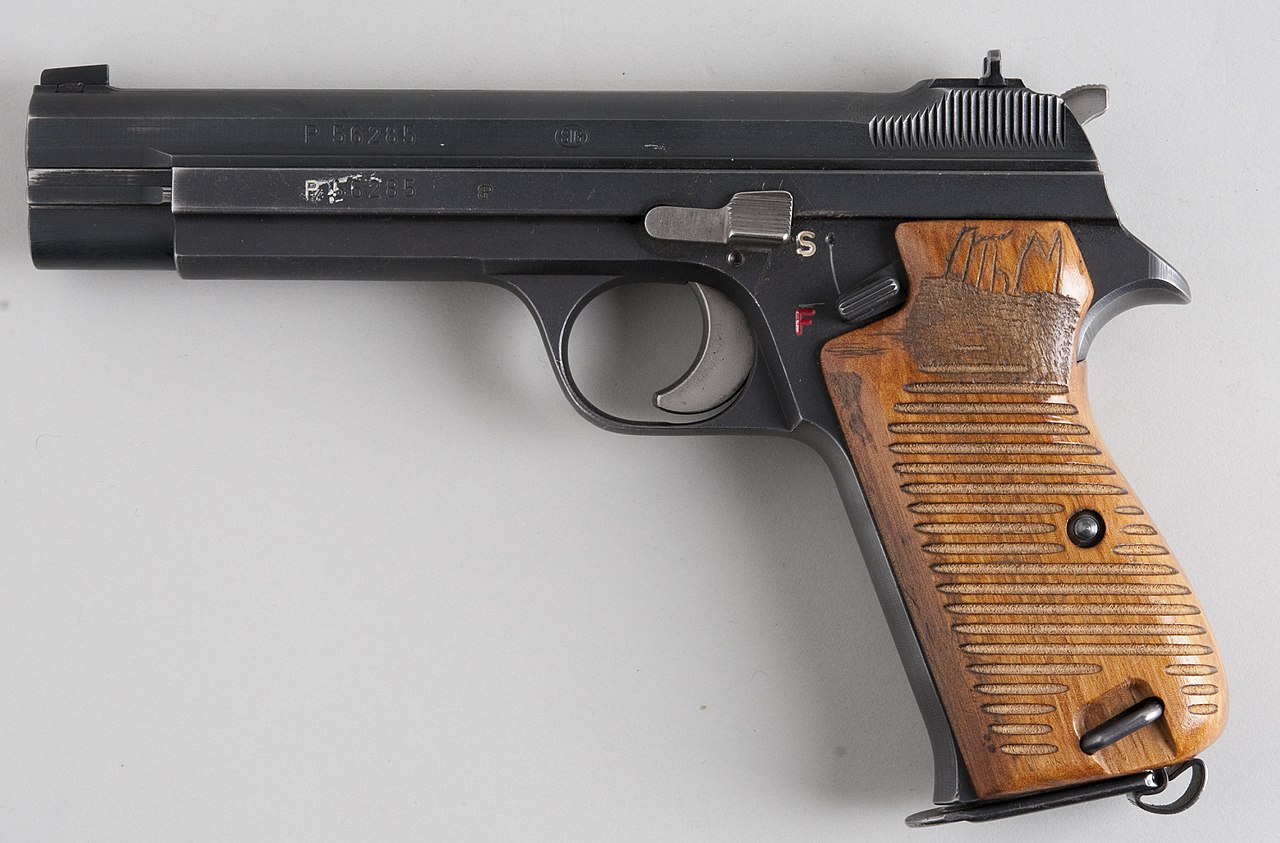
The SP47/8 became generally known as the Model 49 because they entered service with the Swiss military in 1949, and these are most commonly encountered with the grooved wooden grips. The caliber was 9x19mm which would become the NATO standard pistol cartridge (NATO was created in April 1949). Models issued to police were sometimes chambered for the 7.65x21mm cartridge as it was the chambering of the M1900 Luger pistols used previously.
Specifications
Length: 8 1/2“ (215mm)
Barrel Length: 4 3/4″ (120mm)
Width: 1 1/4″ (32mm)
Height: 5.1″ (130mm)
Weight: 34.7oz (985gm) for caliber 9x19mm, 35oz (995gm) for caliber 7.65x21mm.
Magazine Capacity: 8 rounds
SIG P210-2
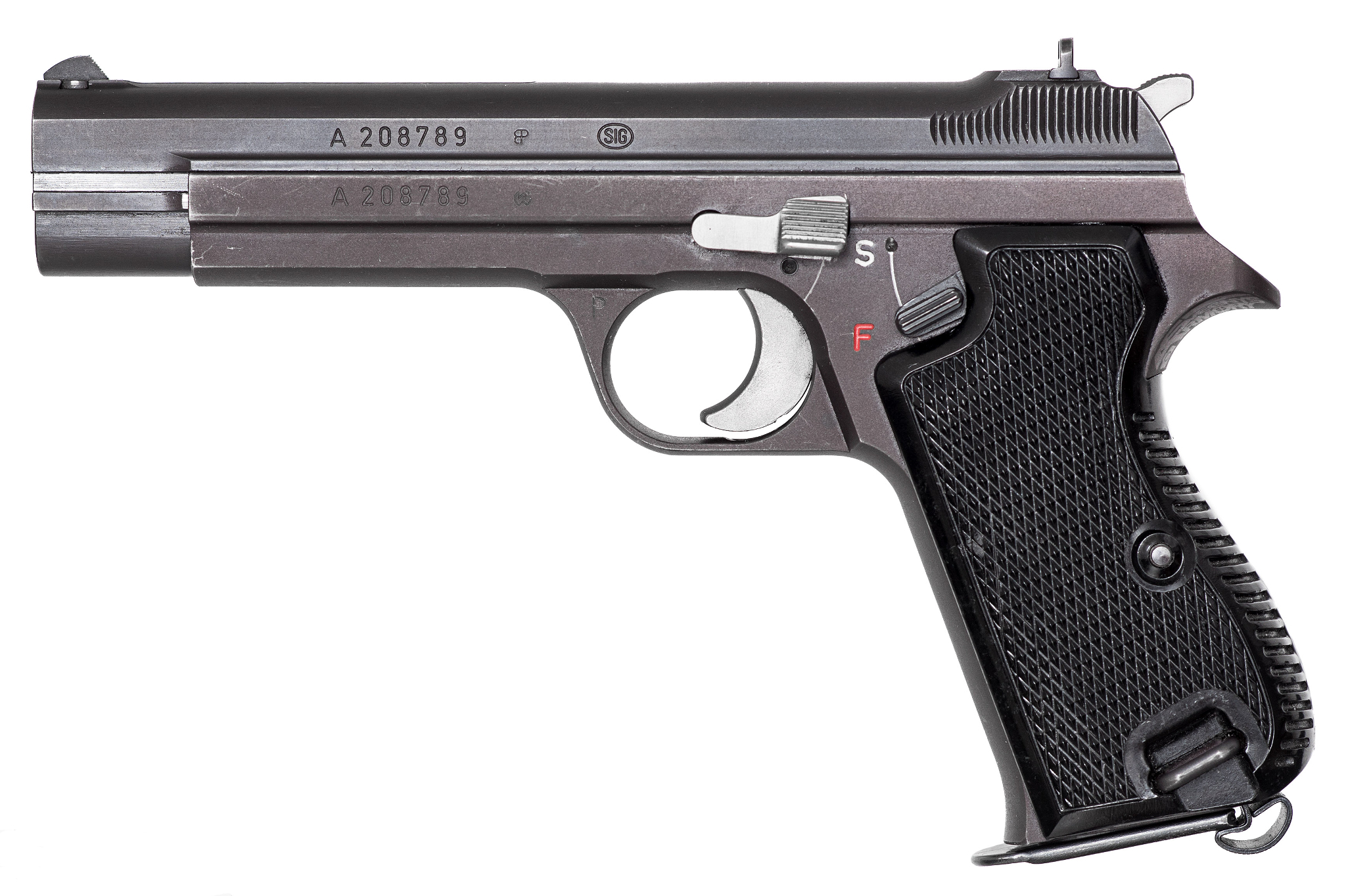
The SIG P210-2 superseded the Model 49 and its main differences were its plastic grips and bead blasted flat finish. This model became the most common of the P210 variants being standard Swiss military issue. This pistol was also sold commercially. It is important to realize that Switzerland believes in having a population of armed citizens. At the time the P210 was introduced all males were required to do three years compulsory military service and then remain in the Army reserve until they were in their fifties. Military weapons, including automatic rifles and pistols were kept by each man at home, the rifle typically hung over the mantelpiece in the living room. In truth the Swiss have long practiced what George Orwell intended when he wrote “the rifle hanging on the wall of the labourer’s cottage or working class flat is the symbol of democracy“. Australian poet Henry Lawson picks up a similar theme in “Every Man Should Own a Rifle“.
The caliber for the P210-2 was 9x19mm NATO, otherwise specifications are the same as for the Model 49.
SIG P210-3

The P210-3 was a limited order police pistol made for the police forces of Basel, Lausanne and Glarus. These have small differences by comparison with the Model 49 (P210-1) having no lanyard ring and being finished in polished blue. These are a rare version of the P210 there having been only 900 made. They were made in both 7.65x21mm and 9x19mm.
SIG P210-4
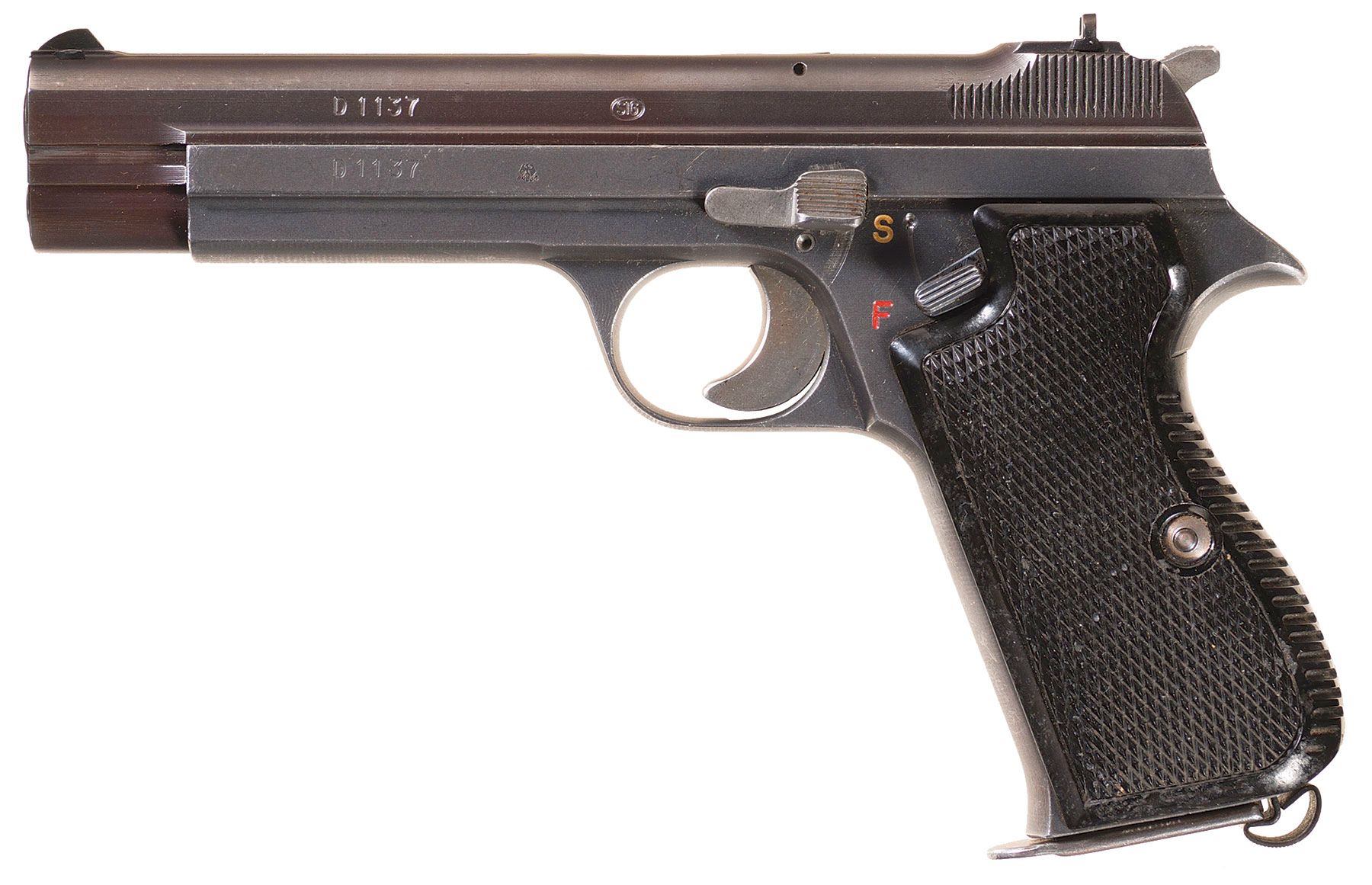
(Note: the pistol pictured above (serial number D1137) is for sale by Rock Island Auction on February 16th, 2018. To see the sale page click here).
The SIG P210-4 was manufactured in 9x19mm for the German Bundesgrenzschutz border police. This model omits the lanyard ring of the Swiss pistols and has a loaded chamber indicator. These pistols were made in the 1950’s in 9x19mm and have serial numbers in the range D 0001 to D 5000, so 5000 were made.
SIG P210-5
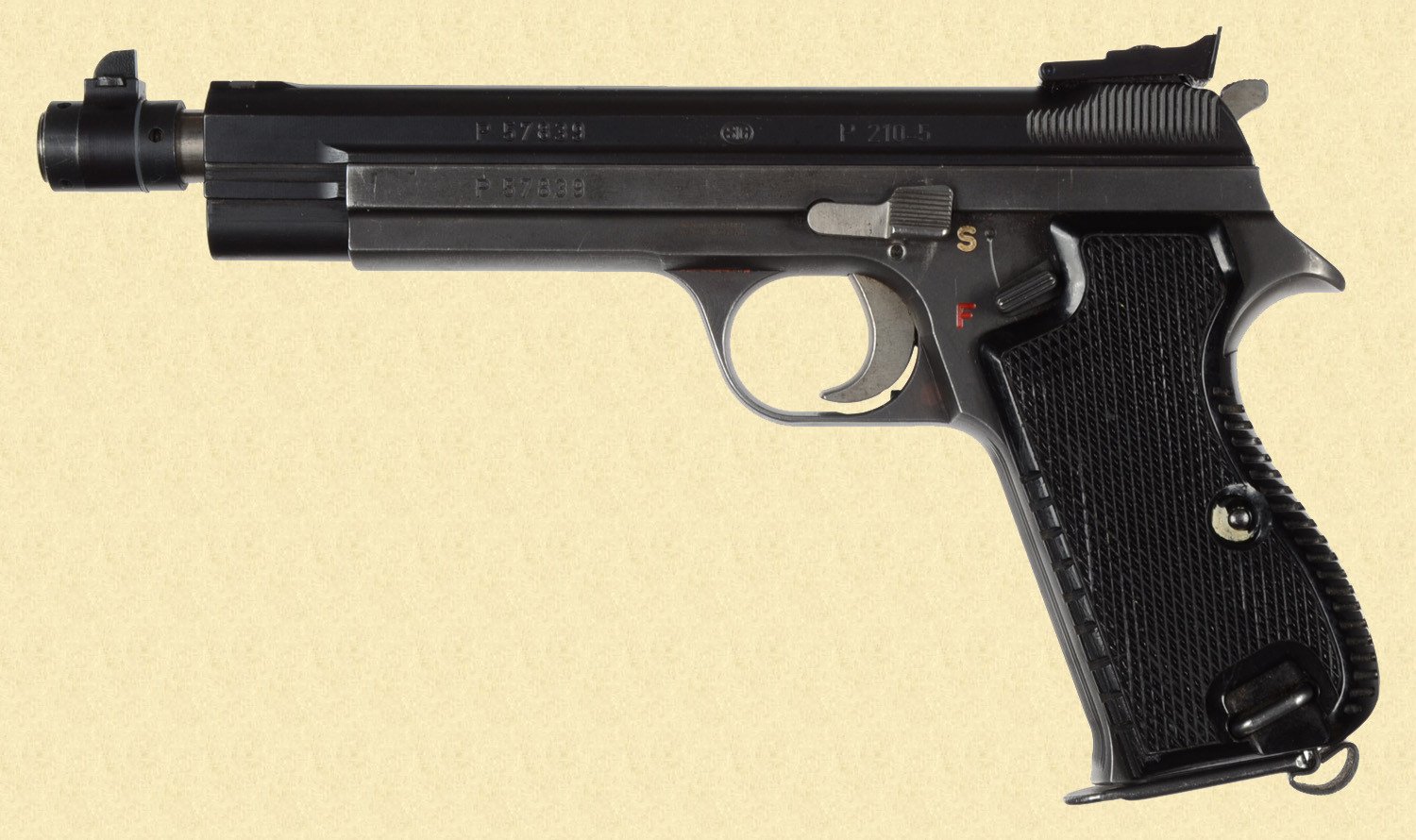
(Note: You can find the above pictured pistol for sale by Simpson Ltd. if you click here. Simpson Ltd have a number of P210 pistols for sale as well as other makes).
The P210-5 was the target/sport version of the P210 and was made with a longer 5.9″ (150mm) barrel in 9x19mm, 7.65x21mm, and 22lr rimfire. The P210-5 could be purchased with either plastic or wood grips
Specifications
Length: 8 1/2“ (215mm)
Barrel Length: 5.9″ (150mm)
Width: 1 1/4″ (32mm)
Height: 5.1″ (130mm)
Magazine Capacity: 8 rounds (all calibers including .22lr).
SIG P210-6
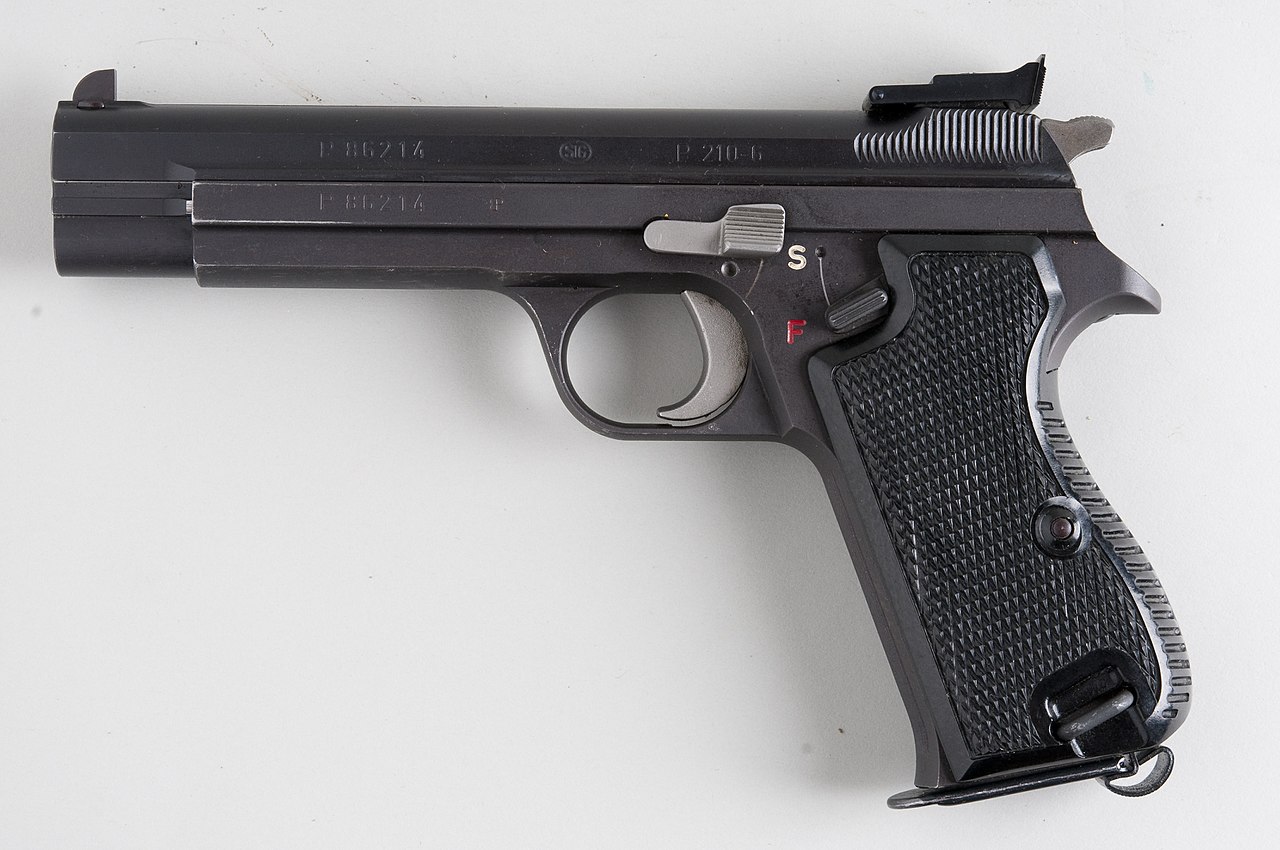
The P210-6 was a sports model with bead blasted finish and most usually seen with adjustable target sights. This is the model that I’ve had the opportunity to spend some time shooting. Usually fitted as standard with the plastic grips, wood grips were an optional extra. Made in both 9x19mm and 7.65x21mm the P210-6 has the distinction of being fitted with an adjustable trigger that was excellent to use.
Danish SIG P210-DK M/49 “Neuhausen”

The P210-DK was the version of the M/1949 made for the Danish military. It remains in service with them after 60 years of service and still going strong. The caliber of all these pistols is 9x19mm. These pistols are normally issued to officers, military police, and special forces.
SIG P210-7

The SIG p210-7 was the .22lr rimfire model. That being said all P210 pistols are able to be fitted with a .22lr conversion kit so the user can do lots of practice at modest cost. The P210-7 provides a great target pistol especially suited to some of the common ISSF events such as Standard Pistol, the Ladies Match, and would also have been a good choice for the pistol shooting section of the Olympic Modern Pentathlon as practiced in the 1950’s, 1960’s and 1970’s.
Other Variants
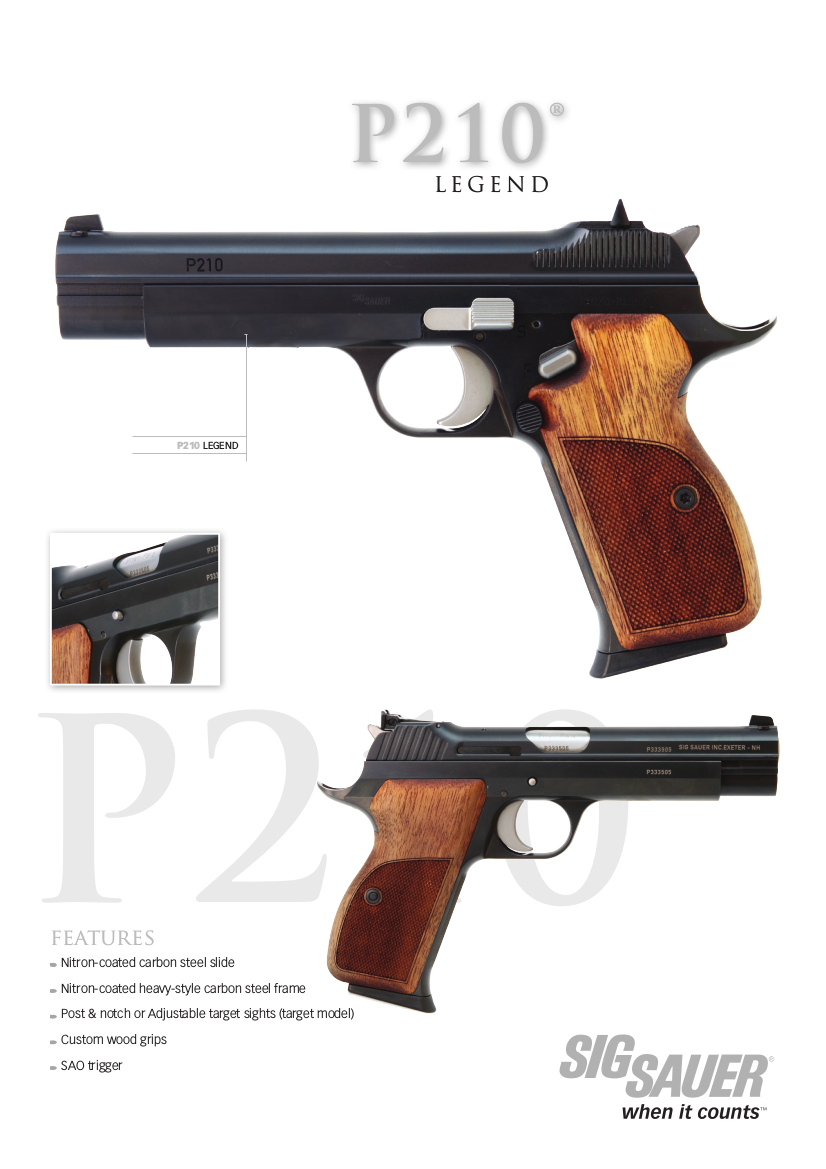
The models listed above are the main ones that represent the Swiss heritage of the SIG P210. There have been a number of other variants made in more recent years, especially in the time when SIG merged with Sauer to become SIG Sauer. The most significant of these were the SIG Sauer P210 Legend and P210 Legend Target. These models featured a move of the magazine catch from the heel of the grip to being a button positioned just behind the trigger as on the Colt 1911. This change was, without doubt, aimed at attracting American buyers. In the various tests published in American magazines the location of the magazine release had been a universal point of criticism. Interestingly, whilst IPSC competitors prefer to be able to work a magazine release with their thumb and let the magazine drop out: Israeli Krav Maga instructors teach students to actively pull the magazine out regardless of whether you think it will fall or not. For the practical Israeli method the original magazine release of the P210 would be preferable. The P210 Legend also features an Amercan style upswept beavertail to prevent hammer bite. Personally I prefer the style of the original pistols, but each to his or her own.
Current Model: SIG Sauer P210 Target

A version of the P210 is still made although it is a quite different animal by comparison with the original classic P210’s. This new pistol is the SIG Sauer P210 Target and it is being made in the United States. This pistol has been extensively re-styled as a pure bred target competition handgun chambered for the 9x19mm cartridge.
You will find this pistol on the SIG Sauer website if you click here.
You will find the manual for the new SIG Sauer P210 Target if you click here.
The SIG Sauer P210 Target remains very similar in size to its parent. The barrel length is 5.0″ (127mm), overall length is 8.4″ (214mm), width is 1.6″ (41mm), height 5.3″ (135mm), and weight 36.9oz (1,120gm)
This new model is much more affordable than its predecessors, being priced at USD$1,699.
Field Stripping (Original Swiss made pistols)
Charles Petter made sure his original design was a practical proposition in all conceivable environments and situations, and the engineers at SIG were careful to keep those practical features intact. The P210 is very easy to field strip and maintain. The instructions below are for the classic models from P210-1 up to the P210-6 and P210-7.
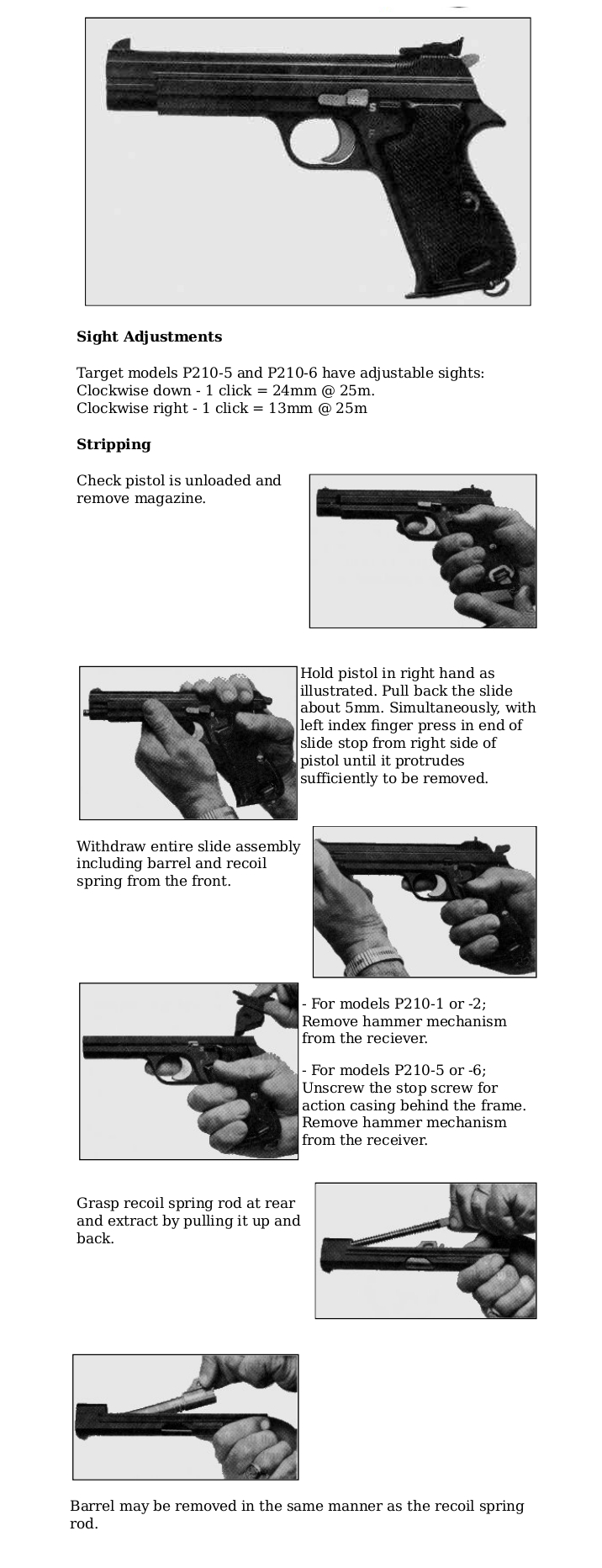
Conclusion
The SIG P210 has stood the test of time and remains one of the world’s great handguns. The thing that the SIG P210 excels at is accuracy. In a close quarters combat at 7 yards situation you won’t notice just what a tack-driver this pistol is, but put the paper way out at 50 yards and the P210 comes into its own and simply shines. That may be why SIG Sauer now only make the P210 as a target pistol: it’s pretty certain to outperform most any other handgun that comes up against it. With CNC machining bringing the manufacturing price of this pistol down out of the stratosphere and into the mainstream we hope this great handgun gets discovered and becomes a joy to many.
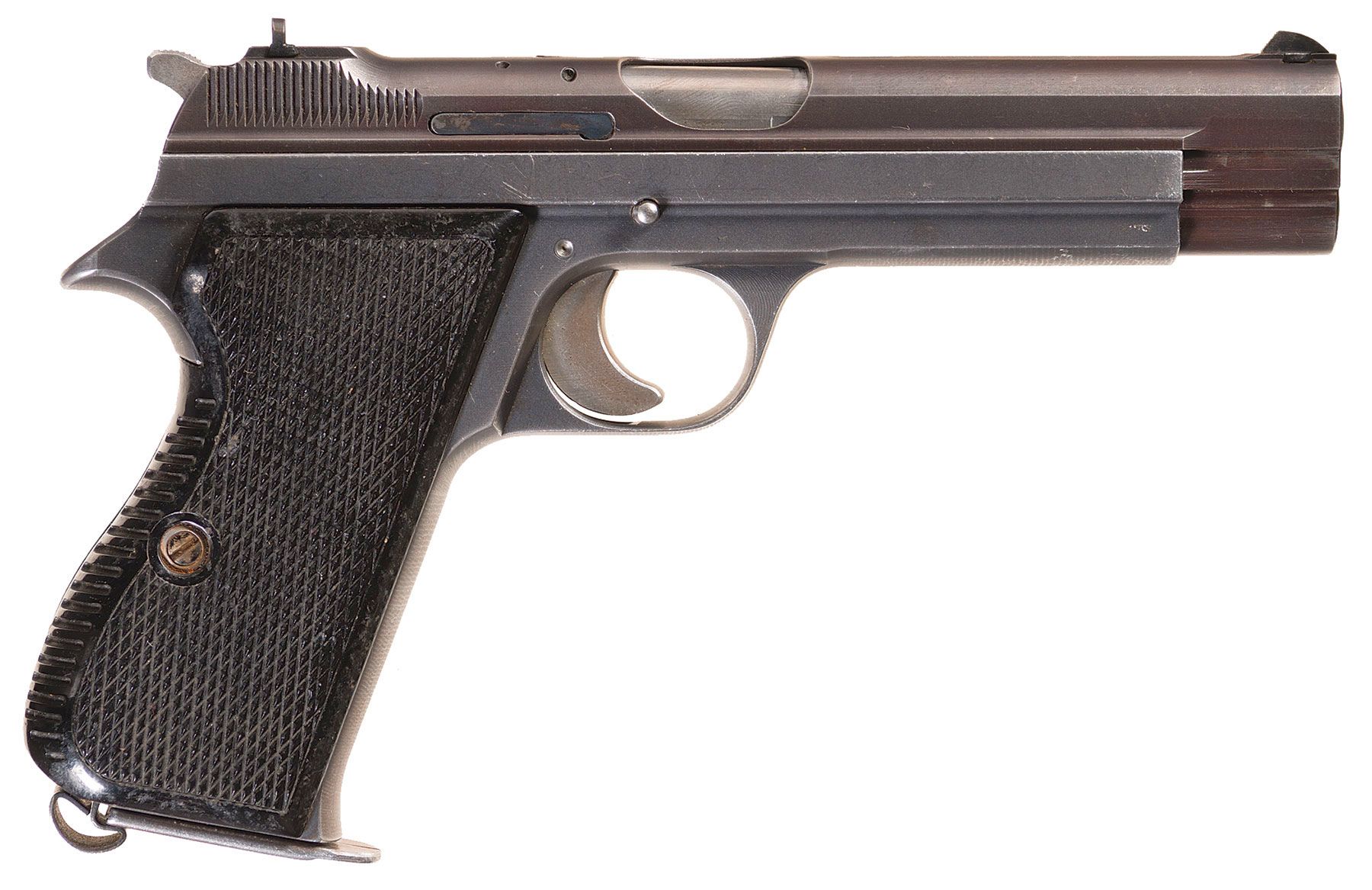
Note: You will find the sale page for the above pictured SIG P210-4 if you click here).
(Feature image at the head of this post courtesy Rock Island Auction.).

Jon Branch is the founder and senior editor of Revivaler and has written a significant number of articles for various publications including official Buying Guides for eBay, classic car articles for Hagerty, magazine articles for both the Australian Shooters Journal and the Australian Shooter, and he’s a long time contributor to Silodrome.
Jon has done radio, television, magazine and newspaper interviews on various issues, and has traveled extensively, having lived in Britain, Australia, China and Hong Kong. His travels have taken him to Indonesia, Israel, Italy, Japan and a number of other countries. He has studied the Japanese sword arts and has a long history of involvement in the shooting sports, which has included authoring submissions to government on various firearms related issues and assisting in the design and establishment of shooting ranges.

